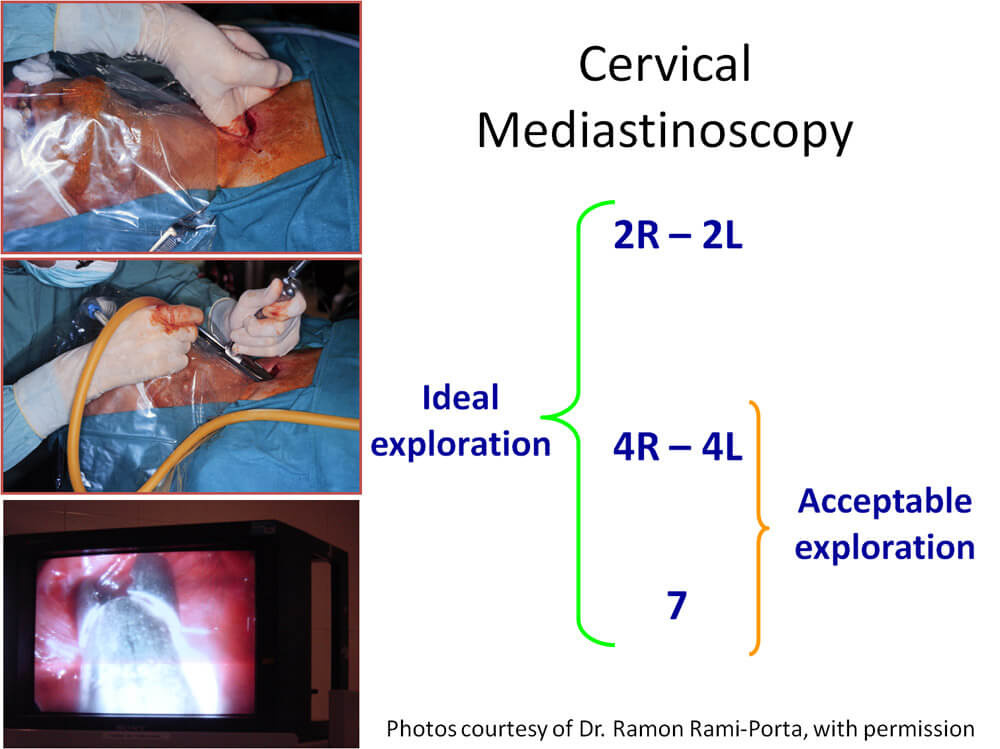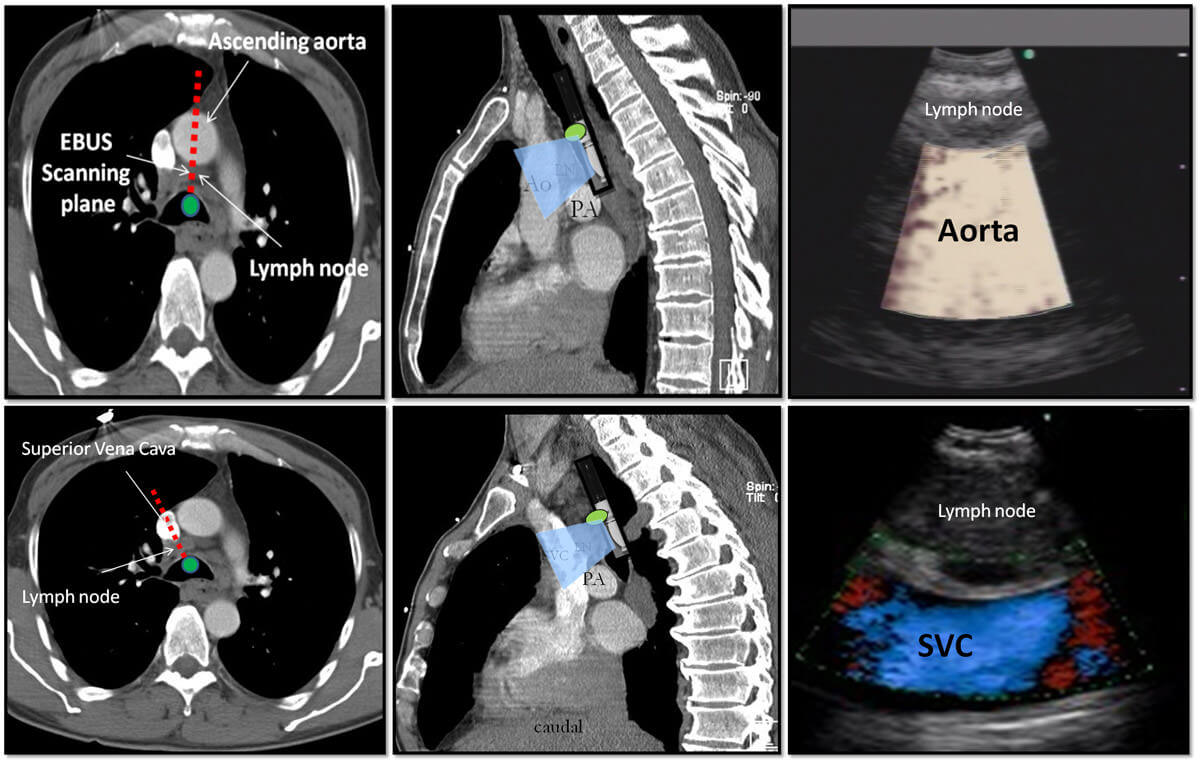 | . | Step 6 of 41 |
 |
Clinical Stem 3
A patient with right upper lobe adenocarcinoma progressing on biomarker-directed therapy
A patient with right upper lobe adenocarcinoma progressing on biomarker-directed therapy
Answer C


Non-diagnostic EBUS or EUS-guided TBNA, defined as specimens that contain neither malignant cells nor lymphocytes, occurs in as many as 20% of individual aspirates and 10% of cases overall. Mediastinoscopy is likely warranted in these cases.
References:- Annema JT, van Meerbeeck JP, Rintoul RC, et al. Mediastinoscopy vs. endosonography for mediastinal nodal staging of lung cancer: a randomized trial. JAMA 2010; 304: 2245?2252.
- Yasufuku K, Pierre A, Darling G, et al. A prospective controlled trial of endobronchial ultrasound-guided transbronchial needle aspiration compared with mediastinoscopy for mediastinal lymph node staging of lung cancer. J Thorac Cardiovasc Surg. 2011; 142: 1393-400.
- Stoll LM, Yung RC, Clark DP, et al. Cytology of endobronchial ultrasound-guided transbronchial needle aspiration versus conventional transbronchial needle aspiration. Cancer Cytopathol 2010;118: 278?286.
- Alsharif M, Andrade RS, Groth SS, et al. Endobronchial ultrasound-guided transbronchial fine-needle aspiration: the University of Minnesota experience, with emphasis on usefulness, adequacy assessment, and diagnostic difficulties. Am J Clin Pathol 2008;130:434?443.







